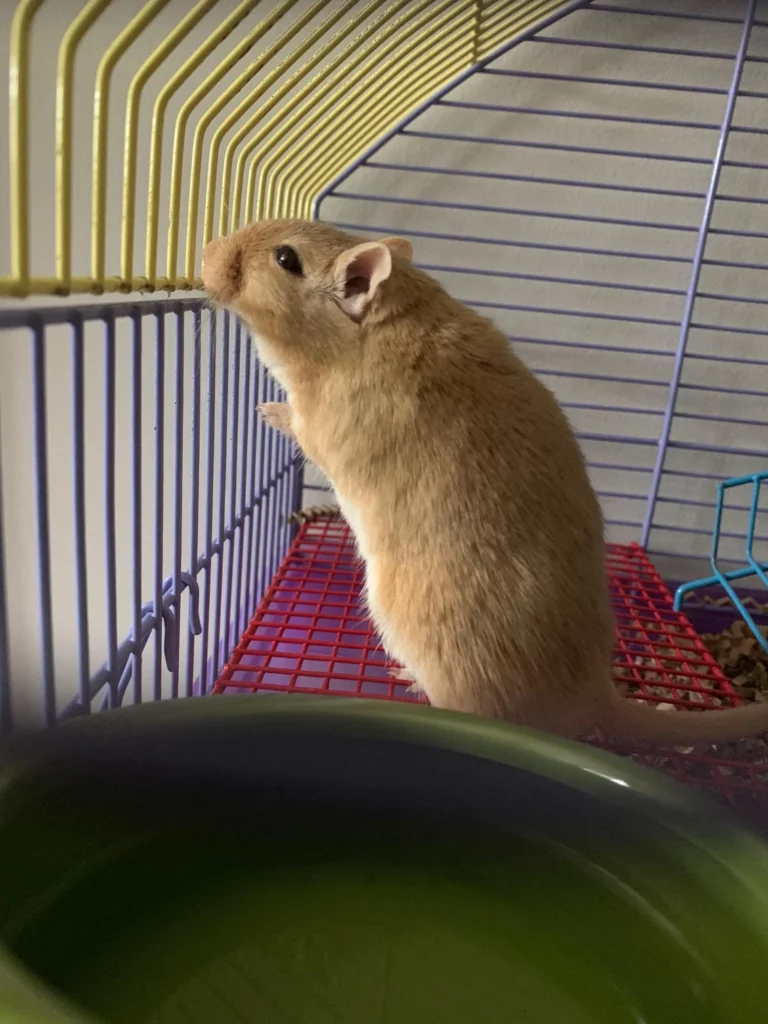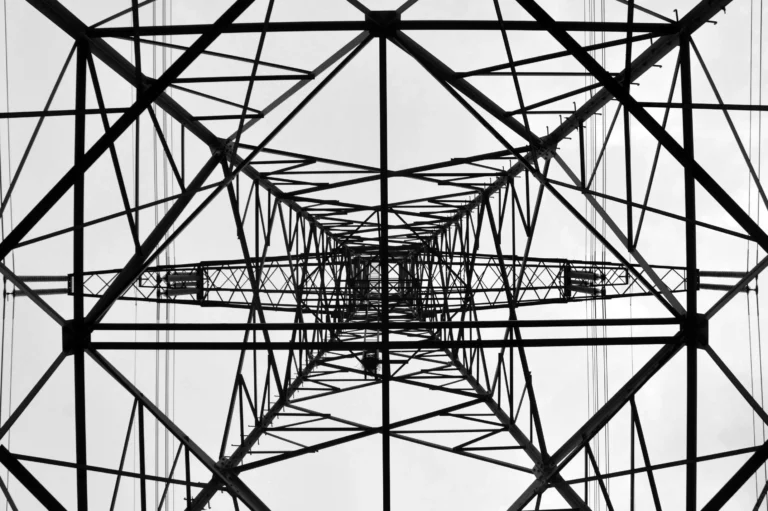MyHEAT
201-1228 Kensington Rd NW
Calgary, AB T2N 3P7
Canada
What Can Utility EE Program Managers Learn From One Million Gerbils?
Uncover the captivating world of energy efficiency through the lens of a gerbil named Rex. In this article, we delve into the unexpected parallels between gerbil behavior and the challenges faced by utility EE program managers
Gillian Ward
- Published
- Updated

Life lessons can come from unexpected sources, and the energy sector is no different. Inspiring responsible energy use and changing consumer behavior requires creativity – in the way we market, how we problem solve, and in the way we share information. So here’s a creative take on some essential energy efficiency lessons from an unexpected source: Rex the gerbil.
Use these tools to explore the motivations of your consumers, and learn how gerbils can spark a creative approach to incentivize and motivate your energy efficiency customers.
Table of Contents
ToggleWhat can a thermal infrared image of Rex the gerbil teach us about thermal imagery solutions?
Zach, a colleague of ours, had a pet gerbil named Rex. Let’s meet the little guy.


As a MyHEAT employee (aka “HEATer”), Zach is thinking about thermal imaging about 20x more than the next person, so he used a thermal infrared FLIR camera to take thermal photos of Rex.
Anything that generates heat can be detected by infrared technology, and gerbils with their warm furry little bodies are no exception. Wildlife aficionados and hunters use infrared technology to find animals in the wild in a similar way; in a cold forest or a cage it’s easy to detect the reds and yellows of a mammal in the wild or captivity. Our furry friend Rex’s fur type, thickness and color could be likened to a building’s insulation, material, and emissivity, all important factors in thermal infrared imaging.
In the first photo here, we see Rex in his comfortable nest of wood shavings, with soft brown fur and one eye on his owner to see why the cage has been opened up.
The second photo shows Rex’s internal temperature, with the range of temperature represented by a range of colors.


Let’s explore how high definition Infrared (IR) Thermal imaging can be used to motivate, incentivize and inspire consumer behavior and change with this image of Rex as inspiration.
Where did infrared technology come from?
The history of the infrared camera itself is rooted in a series of discoveries from unexpected sources. The use of thermal imaging to detect and map heat loss dates back to the 1800s when astronomer William Herschel was trying to look at the sun through his telescope without burning his eyeballs out. He used a red lens to filter out the sun and noticed how quickly it heated up, which made him curious about how much heat red would produce compared to other colors. Later advances gave us the bolometer, which could measure radiation down to 1/100,000 of a degree, followed by the first night vision camera in the 1920s and a whole slew of other advances leading us to MyHEAT’s unique thermal infrared mapping and recent advances in AI in the thermal imagery industry.
Why does heat loss mapping matter?
Understanding and identifying heat loss in buildings can motivate customers to act based on financial, practical, and sustainability factors. Research shows that a thermal image of someone’s home makes someone 5X more likely to weatherize their home.
While most people will say they like the idea of saving money or helping the environment, energy efficiency can be intimidating and heat loss can be difficult to describe. It’s invisible, so it’s hard to demonstrate without a visual asset. It can be challenging for consumers to understand the true benefits of energy efficiency, or to digest information about optimizing a home or businesses for wiser energy decisions.
Heat Loss Maps are a unique and visual aid to pinpoint building energy loss of residential neighborhoods and homes, shopping centers, commercial buildings, factories, stadiums, garages, and more.
In this image comparison, the thermal heat loss map shows several areas of high heat loss (shown in red) for a residential home in the US. Creating these images is MyHEAT’s superpower.

How do MyHEAT HEAT maps work?
MyHEAT uses aerial thermal infrared remote heat mapping to generate a birds-eye visualization of thermal energy loss across entire cities. Heat loss graphics are easy for any consumer to understand, with areas of high heat loss marked in red and lower heat loss in blue.
Machine learning helps us to efficiently and economically use this information to generate comparable efficiency metrics and identify heat loss in any building. By creating custom energy maps, MyHEAT shows consumers exactly how their energy loss compares to their neighbors, guiding them to desired solutions.
Gerbils are known to be curious, and so are consumers. HEAT ratings let consumers see how their home compares to similar homes nearby.
What Can Gerbils Teach Us About Thermal Imagery and Energy Efficiency Heat Mapping?
Okay, so what about the gerbil? Gerbils have a surprising number of parallels to heat and energy mapping when it comes to understanding the consumers you’re targeting. Here are the energy efficiency lessons we can learn from gerbils and understanding how thermal imagery works.

1. No two gerbils – or consumers – are the same
There are over 100 gerbil species in existence, and each one has unique needs and behaviors. Imagine for a second, one MILLION of these gerbils. If these gerbils were your customers, how would you try to get their attention, engage them, educate them?
Our answer, because we think about this question a lot, is to use our insights and analytics to let you, an energy efficiency utility professional, specifically define and target segments to personalize customer engagement. At MyHEAT, our unique ability to target and segment specific consumer groups allows you to communicate effectively with targeted demographic subgroups of humans (and if you wanted, gerbils too):
-
- Incentivize low income communities with cost-effective energy solutions and savings
-
- Speak to eco-minded consumers with motivating messaging to invest in more sustainable technology or home systems or weather-proof homes
-
- Motivate groups with low participation with highly visual, interactive mapping to inspire action
-
- Break through to high or moderate income groups to influence purchasing decisions
Customers can access their personalized profiles through our online profiles with direct links to energy efficiency programs. No two energy consumers are the same either, even in the same home.
If you’ve ever lived with another person, you know that mammals can have surprisingly different experiences of temperature; with one partner turning up the heat and the other one sneaking other to turn it back down when their back is turned.
The takeaway: Understanding different groups and specific demographics, even within a single household, is key to changing motivation and consumer behavior.
2. We’re all social creatures who are motivated by comparison
Gerbils are socially aware and conscious of what other gerbils are doing, with a group mentality. Gerbils are often bonded in pairs; Rex found a BFF in Zach, so his pair was a human. But human groupings aren’t that different.
By creating thermal energy maps across rooftops, MyHEAT lets consumers compare their own heat mapping with that of their neighbors. This motivates users to create goals and see how their own output matches up. With MyHEAT, buildings are given a score from 1-10 to show how they compare in terms of heat loss.


The takeaway: Social comparison is a reliable behavioral energy efficiency method to overcome inertia and motivate action.
3. Prioritizing comfort
Gerbils prioritize comfort just like consumers do. Rex created soft linings for his nest and loved to burrow, eat and get comfortable. In the same way, customers who are motivated to act on energy savings or for the environment might prioritize comfort instead of doing the extra work it takes to seek out information on energy savings. Low-income households often encounter high energy costs, structural issues, and poor at-home comfort in tandem. A New York City study demonstrated the well-known link between improved energy efficiency in homes and an increase in thermal comfort, enhanced air quality, and improved safety for residents.
When we talk about comfort, we’re talking about more than just temperature; the human experience of comfort can include any environmental stimuli, elements like humidity, psychological well being, air quality indoors, and aesthetic cues to relax. Habits, having a sense of control over one’s environment, and behavioral patterns are all key factors in the way holistic personal comfort influences consumer decisions.
Gerbils sometimes need a bit of an incentive just like we all do; a visual cue or a treat to motivate movement. MyHEAT case studies shows that being offering customers heat loss insights for their home can lead to a 90% increase in digital accounts created and can significantly improve customer satisfaction. Browsing the data from the comfort of your own home with a low-friction online experience makes even the experience of considering a change comfortable.
The takeaway: Comfort is an often-overlooked message to use when communicating the benefits of energy efficiency. Comfortable customers often make for happy customers, just as comfortable gerbils are happy gerbils!
4. Humans and gerbils need a good reason or a cue to change course or try something new
Gerbils do things that don’t always make sense. Running on a wheel that goes nowhere feels good and is necessary for a gerbil in captivity, but metaphorically as humans we often do the same thing; staying in the same place or wasting energy when we could be sustaining and saving it. Reducing the energy to power and cool homes means we need to give consumers a visual cue to change. Overcoming inertia is part of the power of a visual incentive, for gerbils and humans alike.
Customers might be hesitant to stop heating their home in the way they always have, or they may know they should insulate their attic but put it off for far longer than is logical. MyHEAT impacts energy conservation with actionable heat loss insights – kind of like pointing out to a gerbil that they’ve been running in circles and offering them a reason to choose a new path.

The takeaway: When running energy efficiency marketing campaigns, images truly are worth a thousand words.
5. It can be hard to keep a consumer — or a gerbil’s — attention.
As the climate changes, humans have also adapted to a commercial climate where they’re barraged with email marketing, social media alerts and text messages all day long. The average adult internet user’s attention span is around 8.25 seconds. Your consumers are inundated with a flood of bids for their attention, and many of these bids are flashy and immediately engaging.
Our visual heat mapping aids hook in distracted consumers with thermal information that’s easily accessible, personalized, and engaging for each targeted segment. Whether it’s a 16x clickthrough rate to the Union Gas website or a 90% increase in online accounts for Saint John Energy, MyHEAT’s unique technology cuts through the noise to reach consumers directly.
The takeaway: Use visual aids and pattern-interrupting “hooks” to cut through the noise in your customers’ lives. Why do you think we used a gerbil analogy for this article? 🙂

6. Observing patterns can help us effectively predict and react to gerbil and consumer behavior
Anyone who’s ever dated looking for a romantic partner can tell you that human behavior is unpredictable. But take some time and you can learn to read the signs, in both humans and gerbils. We look for indicators and clues from our pets to see if they need attention or action from us to improve their environment.
Rex would often hang out on Zach’s shoulders while he worked, and he’d be able to tell if there was a change in stress, body temperature, or heart rate. A nibble on the ear or a squeak could be indicative of an incoming request.
Similar clues and indicators are available for your customers and their homes. Think meter/consumption data, program participation data, payment history, customer service calls, and heat loss insights. Taken together, you can start to paint a detailed picture about your customer’s needs. For example, heat loss scores can identify potential problems down the line. A score of six or higher can identify homes that are ideal targets to combat energy poverty, reduce emissions, and improve energy literacy.
An audience of one
MyHEAT uses a combination of heat loss insights, utility data, machine learning, behavioral science, and hard-earned experience delivering customer programs to influence consumer behavior by inspiring action. Each “Rex” is carefully understood so we can document trends and anticipate behavior, and delivered a personalized experience and recommendations to your customers. Think of this as “an audience of one”.
This level of personalization when occupants can see and visually compare their heat loss with other properties is a clear driver for results — with an 2.2x increase in energy efficiency program participation, and a 2.4x reduction in energy consumption.
The takeaway: You have a wealth of data available to help you anticipate customer needs, and by combining this with heat loss insights and ratings, we can help you activate this in new ways to better serve your customers.
7. Climate affects both humans and gerbils
As native desert dwellers, gerbil’s bodies evolved to withstand extreme heat and environmental stressors. Rex was aware of climate and temperature and would adapt his behavior to match his environment. When tunneling, gerbils will dig deeper if their habitat is a warmer temperature to reach the cool earth below.
Similarly, residential and commercial buildings in North America have to withstand harsh frigid winters and hot summers. But sub-par weatherization and improper insulation impacts most North American homes. Thermal energy heat mapping can pair this need for proper insulation and weatherization with action, successfully identifying whether the property is a “hog” or a “dog.”
-
- Hogs are homes that use a lot of energy but can be efficient. These ecosystems benefit greatly from habitual and behavioral changes.
-
- Dogs are homes prone to energy loss from improper weatherization or insulation. In these homes, simple changes like insulating an attic, sealing drafts or caulking around windows can produce significant energy loss benefits.
The takeaway: To more quickly weatherize or electrify thousands of homes, understanding how that home is responding to its climate (e.g using more energy, or losing a lot of energy) is critical to adapt and deliver the right message and the right solutions to the right homes.
Thermal imaging makes sustainable energy benefits clear
When you change a gerbil’s environment in subtle ways, you’re likely to see changes in behavior and health quickly. The MyHEAT platform has been proven to motivate change among building occupants. Our visual platform educates, informs, and provides visual incentive for customers to act on heat loss and claim rebates. In a recent pilot, sponsored in part by Natural Resources Canada, a utility using MyHEAT’s platform found a 30% increase in weatherization applications and a nearly 20% increase across all offered measures. These savings supplemented a measurable reduction in consumption from behavioral changes as well. Showing people their own home’s heat loss is a proven way to increase program participation by up to 220%.
To learn more about MyHEAT and how we can help keep your programs relevant, visit myheat.ca or email us at hello@myheat.ca.
RIP Rex, fellow HEATer, 2023. Thanks for inspiring this article.


